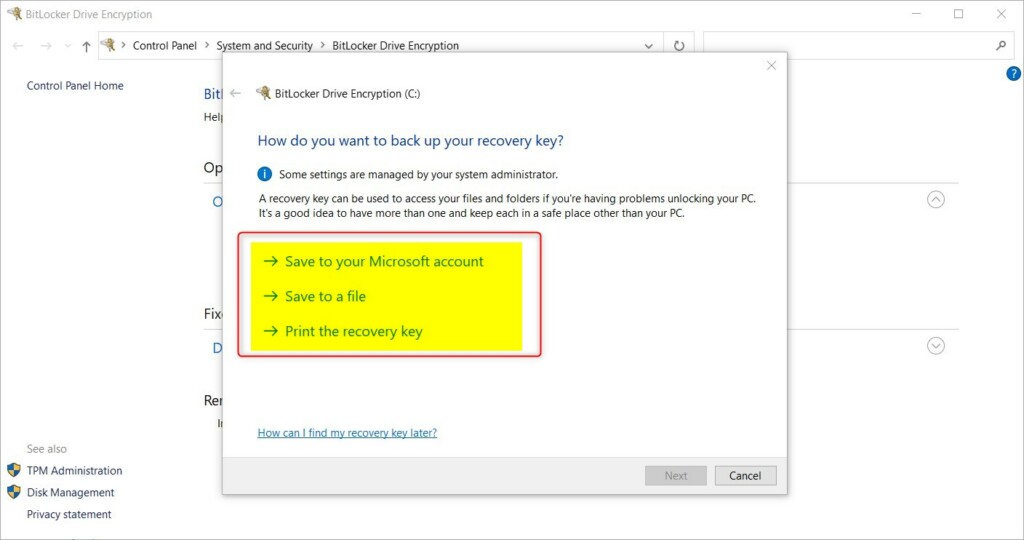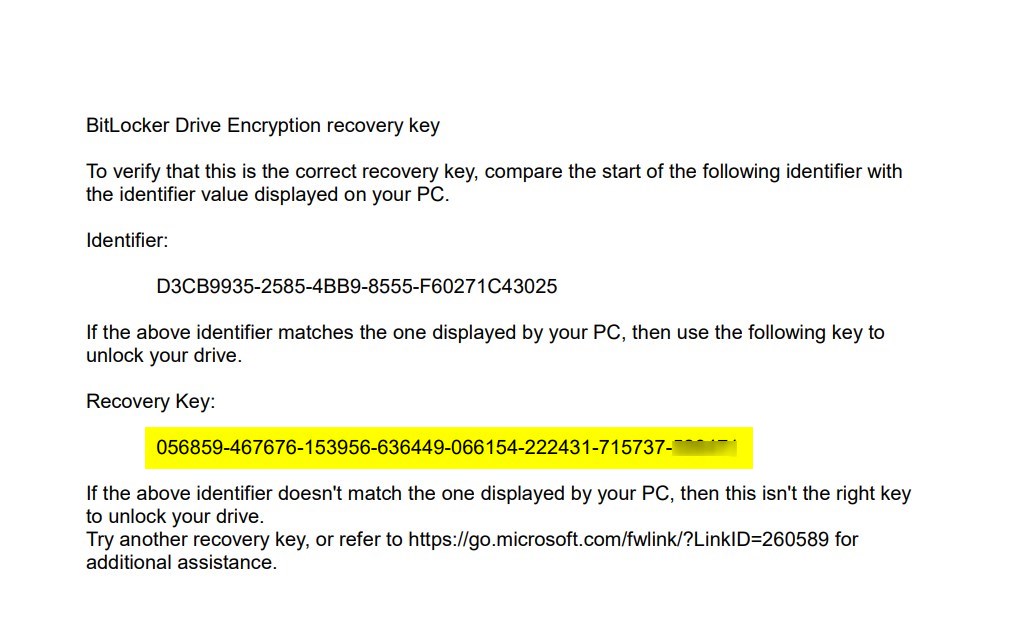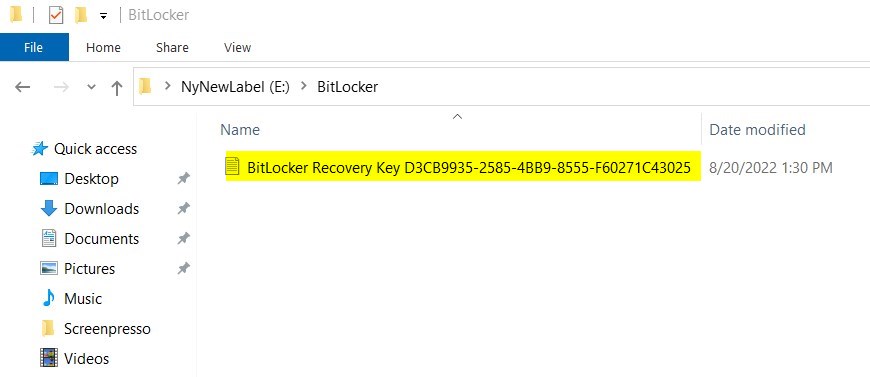This post describes how to find your BitLocker recovery key in Windows 11.
BitLocker helps protect your computer data, so only authorized users can access it. Access will be denied if someone tries to access your BitLocker-enabled computer without authentication.
You’ll be prompted to back up your BitLocker Recovery key during the BitLocker encryption process. There are multiple locations one can use to store their BitLocker recovery key.
Your BitLocker recovery key is a unique 48-digit numerical password that can be used to unlock your system if BitLocker is otherwise unable to confirm that the attempt to access the system drive is authorized.
If you use a Microsoft account to sign into your BitLocker encrypted device, you can use another device to find your recovery key from your Microsoft account.
Use the link below to access your BitLocker recovery key online:
https://account.microsoft.com/devices/recoverykey.
How to find your BitLocker recovery key in Windows 11
As described above, if your system asks you for your BitLocker recovery key, the following information may help you locate your recovery key.
When you encrypt your Windows device, you’ll get a prompt to save or store your recovery key.

You can save the recovery key at the following locations:
- Microsoft account – Microsoft personal or business online account.
- On a printout – Print out from a printer.
- On a USB flash drive – Save the key to the USB connection to your computer.
- In an Azure Active Directory account – Organization using a work or school email account.
- Held by your system administrator – Work or school environment where the system administrator keeps your BitLocker recovery key.
So, all the above locations are places you can look to get your device’s BitLocker recovery key if you are for it.
From Microsoft account:
If you saved your device’s BitLocker recovery key online account, then use the link below.
https://account.microsoft.com/devices/recoverykey
On a printout:
If your key was printed, you should have a paper similar to the one below.

On a USB drive:
If you saved your recovery key on a USB disk, use another device to open the drive’s content.

Suppose you cannot use the local drive’s BitLocker recovery key and can’t revert any configuration change that can have caused it to be required. In that case, you must reset your device using your Windows recovery options.
That should do it!
Conclusion:
- Your BitLocker recovery key is a crucial safeguard for accessing your system in case of authentication issues.
- It can be stored in various secure locations, including your Microsoft account, a printout, a USB flash drive, an Azure Active Directory account, or with your system administrator in a work or school environment.
- If unable to access the local drive’s BitLocker recovery key, consider utilizing Windows recovery options to reset your device.

Leave a Reply Cancel reply